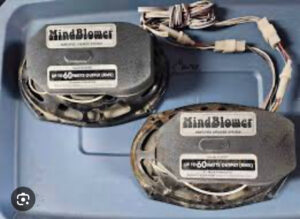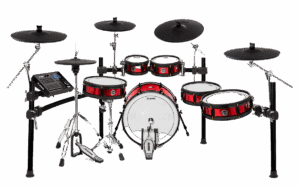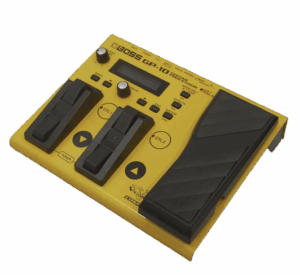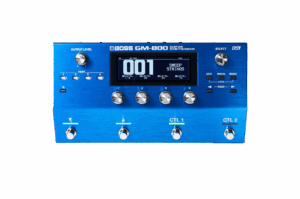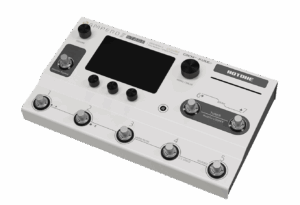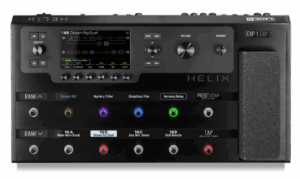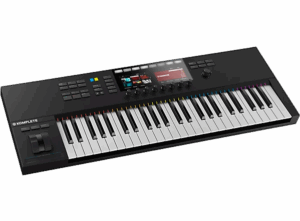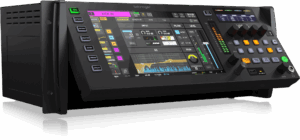
The Korg Krome is a versatile music workstation designed for gigging musicians and producers, offering a wide range of sounds and features at a competitive price point. Below is a review of the Korg Krome (with a focus on both the original and EX models where applicable) based on its performance, design, and functionality, presented in bullet points:
Korg Krome Review
- Sound Quality:
- Offers an extensive sound library with 640 programs, 288 combinations, and over 600 drum grooves, derived from Korg’s flagship Kronos workstation.
- Exceptional piano sounds, including unlooped stereo samples like the “German D Grand,” with the EX model adding a new grand piano and upright piano for enhanced realism, particularly suited for pop and modern genres.
- Electric piano, organ, and clavinet sounds are highly praised for their authenticity, with the EX model incorporating modern EDM sounds and cinematic “Trailer Effects” for versatility.
- Drum sounds are a standout, with over 2,500 samples in the EX model, including the realistic “Jazz Ambience Drums” kit, allowing customizable direct and ambient mixes.
- Some users note that certain acoustic instrument sounds (e.g., woodwinds) can sound artificial, and older presets may feel dated for modern EDM or dubstep.
- Keybed and Playability:
- Available in 61-key and 73-key semi-weighted versions, and an 88-key version with Korg’s Natural Weighted Hammer Action (NH) keybed, which mimics acoustic piano dynamics with a heavier feel in lower registers.
- Semi-weighted keys are responsive for synth and organ playing but may feel sluggish for rapid passages; the NH keybed is decent but not as refined as Korg’s RH3 action found in higher-end models.
- Lacks aftertouch, which may disappoint players seeking expressive control, especially on the 88-key model.
- Some reports of keybed issues, such as occasional missed keypresses during fast playing and a “cheap” feel with noticeable clicking at low volumes.
- Design and Build:
- Lightweight design (61-key: 7.2kg, 73-key: 8.2kg, 88-key: 14.7kg) makes it highly portable for gigging musicians.
- Plastic body is sturdy but feels delicate, requiring careful handling, especially during transport; the EX model features a sleek silver-black or copper finish.
- Elegant aluminum front panel and curved design enhance stage presence, though some users find the button font and feel (stiff, clicky) underwhelming.
- Interface and Features:
- 7-inch color TouchView display is intuitive, supporting touch-drag editing, piano-roll sequencing, and a “safety pin” menu for contextual navigation, making it user-friendly even without a manual.
- Menus on the EX model feel dated compared to competitors like Yamaha MODX, impacting workflow for deep editing.
- 16-track sequencer, dual polyphonic arpeggiators, and RPPR (Realtime Pattern Play/Recording) enable fast song creation; the EX model adds 128 new combinations and cue list functionality for chaining songs.
- USB connectivity and SD card slot allow seamless DAW integration and data management, with included Krome Editor software for detailed sound tweaking.
- Drum Track feature provides inspiring, professional-quality grooves for live performance or production.
- Performance and Usability:
- Ideal for live gigs due to its portability, vast sound palette, and easy-to-navigate interface, though the lack of backlit buttons can hinder stage use in low light.
- Boot-up time of about one minute is a minor inconvenience; some original Krome units had voice dropout issues due to slow microSD cards, fixable with a class 10 SDHC card replacement.
- No sampling or vocoder capabilities, limiting its flexibility compared to higher-end workstations like the Kronos or Triton.
- Value and Drawbacks:
- Priced affordably (starting around $665 for the 61-key model), it offers strong value for gigging musicians and producers needing a versatile workstation without breaking the bank.
- Drawbacks include a dated OS in some units, occasional reliability issues (e.g., boot-up failures with error codes), and a power supply with an external adapter that’s inconvenient for gigging.
- Compared to competitors like Yamaha MOXF or Roland FA-06, the Krome’s piano sounds and sequencer are competitive, but its build quality and keybed lag slightly behind.
Summary
The Korg Krome (and Krome EX) is a powerful, budget-friendly workstation with a vast sound library, intuitive touchscreen, and robust sequencing capabilities, making it a go-to for live performance and studio production. Its piano and drum sounds are highlights, though the keybed and build quality may feel underwhelming for some. Despite minor flaws like dated menus and lack of aftertouch, it remains a strong contender for musicians seeking versatility without the premium price of a Kronos.
